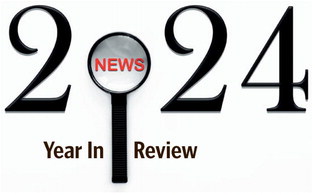Yellowstone Releases Record Of Decision For Bison Management Plan
Yellowstone National Park released its new bison management plan Wednesday, July 24, which has been in the works for more than two years and will aim to keep around 5,000 bison in the park’s herds and continue prioritizing the use of a program to transfer healthy bison to tribes across the country.
The park will keep the bison population in a range of between 3,500 and 6,000 animals after calving, which will keep the population in line with the average of about 5,000 bison that has been largely maintained during the past 10 years.
The record of decision contains most of the same goals as the final environmental impact statement released in June, but the Gianforte administration continues to express its displeasure with the plan and its involvement.
The new plan, which was ordered to be completed following lawsuits that challenged the adequacy of the original proposal, is the first update since the last one was completed in 2000. The park chose the second of three alternatives that were available. Park officials said new scientific information showing no Yellowstone bison had transferred brucellosis to cattle, and changes to the land surrounding the park and the addition of tribal hunting were factors that went into the management changes.
Brucellosis is a disease present in 60 percent of adult female bison and many elk in the park that can cause abortions in pregnant animals and can spread to other animals. Montana has for years fought an increased bison population over fears they would spread the disease to Montana cattle.
“This new plan solidifies much of the progress made over the past two decades and provides a foundation for future decision making,” Yellowstone National Park Superintendent Cam Sholly said in a statement. “We appreciate the significant engagement on this plan by our affiliated Tribes, partners, and the general public.”
Details of the plan
In addition to setting population boundaries, the plan aims to keep the Bison Conservation Transfer Program at full capacity — capturing and holding from 100 to 300 bison for the program each year that will eventually be sent to Native American tribes in 12 different states to establish their own herds. The Interagency Bison Management Plan team would continue its operations and biannual planning.
The plan would continue the Tribal Food Transfer Program by which brucellosis positive bison are sent to tribes like the Confederated Salish and Kootenai Tribes to be processed for food, and also continue to manage the herds through tribal and State of Montana hunting when bison leave the park boundary in the winter. That program is also beneficial, Sholly said, because it keeps the incident rates of brucellosis down within the population.
If the population sits at 5,200 or more at the start of winter, the park would establish an assurance threshold and would manage the population to decrease it so there are not more than 6,000 bison after calving and rely more on hunting than capturing bison for the transfer program or to keep them in the park.
“We’re on the same page of conserving those animals. We believe the park can accommodate a great number of animals, and then what they can’t accommodate, we believe should be translocated to the tribes,” InterTribal Buffalo Council attorney Majel Russell told the Daily Montanan in June.
When the population nears 3,000 late in the winter during severe winters like that of 2022-23, the park would protect the animals inside the park and encourage a reduction in hunting outside of it. The plan would cap removals at 25 percent of the population but could be further limited to account for sex, age and herd structure.
“I feel even though it’s not necessarily maybe perfect, I don’t know if you ever get to perfect on bison, to be honest, in this area. But I think it does solidify a lot of the good things that have happened over 24 years,” Sholly said in an interview Thursday. “… I’m comfortable with the (environmental impact statement process). I think it’s a foundation for the future, whatever that might hold.”
Gianforte says Montana felt shut out of process The park said public feedback played a “key role” in the record of decision and process along the way – more than 27,000 comments were submitted during last year’s comment period – but Montana Gov. Greg Gianforte has derided the Department of interior and National Park Service over the plan and what he says amounted to Montana getting shut out of the process as a cooperating agency.
A spokesperson for Gianforte said Thursday he and his office were still reviewing the decision but provided a letter Gianforte sent to the leaders of the Interior Department and National Park Service on July 1, after the final environmental impact statement was released, criticizing the decision itself and what he says was the park service’s failure “to uphold its cooperative responsibilities.” Gianforte has written Sholly and other agency leaders numerous times over the past 2½ years giving opinions on the plan, asking for meetings, threatening to do away with tolerance zone agreements — a buffer zone where bison are allowed outside of park boundaries — asking the park to keep less than 3,000 bison in the population, and now criticizing the final plan for what he says is a lack of what his administration had hoped for in the new plan.
Gianforte wrote in the July 1 letter that Yellowstone avoided discussions with Montana scientists and advisers “at every turn” and offered meetings when decisions “were fully cooked.” He claimed the chosen alternative was pre-plotted before the National Environmental Policy Act process that led to the new environmental impact statement ever started.
“The condescending and disingenuous methods of NPS and other agencies is forcing a new day in the West. Gone are the opportunities for States and affected stakeholders to show up and earnestly engage in collaborative process,” Gianforte wrote.
“Repeated and continuous procedural abuses, like those outlined above, have hardened those who once believed in fair play. Instead, states like Montana will now show up prepared for marginalized participation, short-changed processes, dishonest brokerage, and ultimately, litigation,” he continued, concluding his letter.
Plan accounted for some of Montana’s concerns Sholly told the Daily Montanan that Gianforte and his administration had submitted comments and written letters and that the final record of decision included further analysis the park service conducted based on some of those comments.
“They can say, you know, this is great, or this is not great. That’s part of the process. They’ve made it very clear that they didn’t like any three of the alternatives,” Sholly said.
He contended that he had offered Montana a chance for a different alternative at an IBMP meeting in 2022, had been to Helena and sent biologists here several times to try to work toward a solution. The State of Montana is one of eight cooperating agencies that contributed to the plan.
Sholly said he thinks if Montana looks at the plan closely, officials will see that it does account for the state’s concerns. He said the park was committed to continuing to work with Montana and other partners to successfully manage a wild and free-ranging bison population while keeping bison-to-cattle brucellosis transmission to zero.
“We’ve obviously kept all tools on the table despite considerable public discontent with some of the tools that are used like ship-andslaughter. And we’re committed to continuing to work together basically in the same paradigm that we’ve been in. I would think that the state would recognize that and see what happens as we move forward.” Sholly said. “… I appreciate the partnership with the state; it’s something we’ve got to work on together. This does not dramatically shift where we’ve been.”
Sholly said he’s heard displeasure from all different sides over the plan and more often the population goals; some people and groups want fewer than 3,000 bison, while others would like to see more than 10,000 in the park on an annual basis. He said he believes the plan strikes the right balance and is in line with where populations have largely sat for the past decade. In the last eight years, the population has ranged from 4,400 to 5,900 after the calving season.
And he noted that surveys have found seeing bison were among the top reasons visitors wanted to go to Yellowstone, that visitor numbers could break an all-time record this year, and those visits benefit Montana’s economy as well.
“I get it; not everybody’s happy on either side. This is where we are at this point in time, and the plan does allow for adaptive management like the last EIS did,” Sholly said. “And as opportunities present themselves over time, with partners we can make adjustments and make changes based on what conditions are happening on the ground.”


